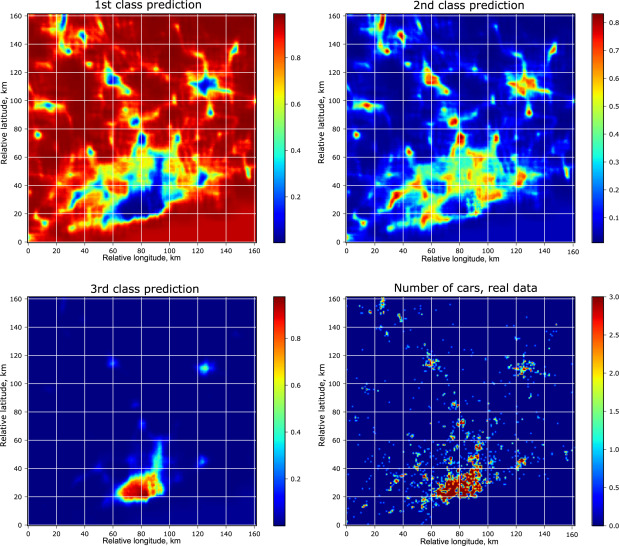[Literature] EV spatial distribution modeling
Niklas...@dlr.de
Hey everyone,
future spatial EV fleet distribution is of interest to most of us transport modelers at one point or another during our research.
I just came across this paper from LUT (title: “Convolutional neural networks in estimating the spatial distribution of electric vehicles to support electricity grid planning”) that proposes two central novelties IMHO:
- It applies a convolutional neural network (CNN) in order to overcome the burden of prohibition of publication of proprietary data sets by training a CNN to basically reproduce data from publicly available sources
- It suggests a method to spatially allocate EVs based on the (available) variables
- total number of cars registered per node,
- the average age of the persons per node,
- the annual median income of the households,
- the number of unemployed persons per raster node
Of course, this type of research is currently still in its early days, but I think these approaches are quite interesting.
https://www.sciencedirect.com/science/article/pii/S0306261922013812?dgcid=raven_sd_via_email

Best
Niklas
——————————————————————————
Deutsches Zentrum für Luft- und Raumfahrt e. V. (DLR)
German Aerospace Center
Institute of Networked Energy Systems | Energy Systems Analysis | Curiestr. 4 | 70563 Stuttgart | Germany
Niklas Wulff
Telephone +49 711 6862-348 | niklas...@dlr.de
DLR is represented by the Executive Board and employees authorised by it.
Head of DLR's legal department, Linder Hoehe, 51147 Cologne, can provide information (DLR.de/imprint).
Robbie Morrison
Hi Niklas, all
It applies a convolutional neural network (CNN) in order to overcome the burden of prohibition of publication of proprietary data sets by training a CNN to basically reproduce data from publicly available sources
The harvesting of "publicly available sources" may still not be sufficient in legal terms.
I mix with open source lawyers where the Microsoft Copilot project is widely discussed. In this example, the training set drew from open source codebases but the underlying public licenses were not respected, transmitted, or advised. This particular controversy is now playing out under US intellectual property law where "transformative" practice can be employed as a fair use defense to copyright infringement. Notwithstanding, many open source project teams are now actively talking about how best to seek redress. Lawyers not directly involved admit the underlying law is ill suited and poorly resolved. And that any resulting litigation may even rely on new case law involving fine arts violations, specifically the current Andy Warhol/Lynn Goldsmith dispute. Some background on wikipedia: https://en.wikipedia.org/wiki/GitHub_Copilot#Licensing_controversy
The copyright and allied rights protection for data is no where
near as clear cut as on source code. But also tougher in Europe
in some respects. The best solution is to get Creative Commons
CC‑BY‑4.0 licenses (or CC0‑1.0 waivers) onto the raw datasets and
pass this attribution license though to the outputs generated by
the trained model.
with best wishes, Robbie
-- Robbie Morrison Address: Schillerstrasse 85, 10627 Berlin, Germany Phone: +49.30.612-87617
